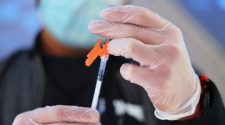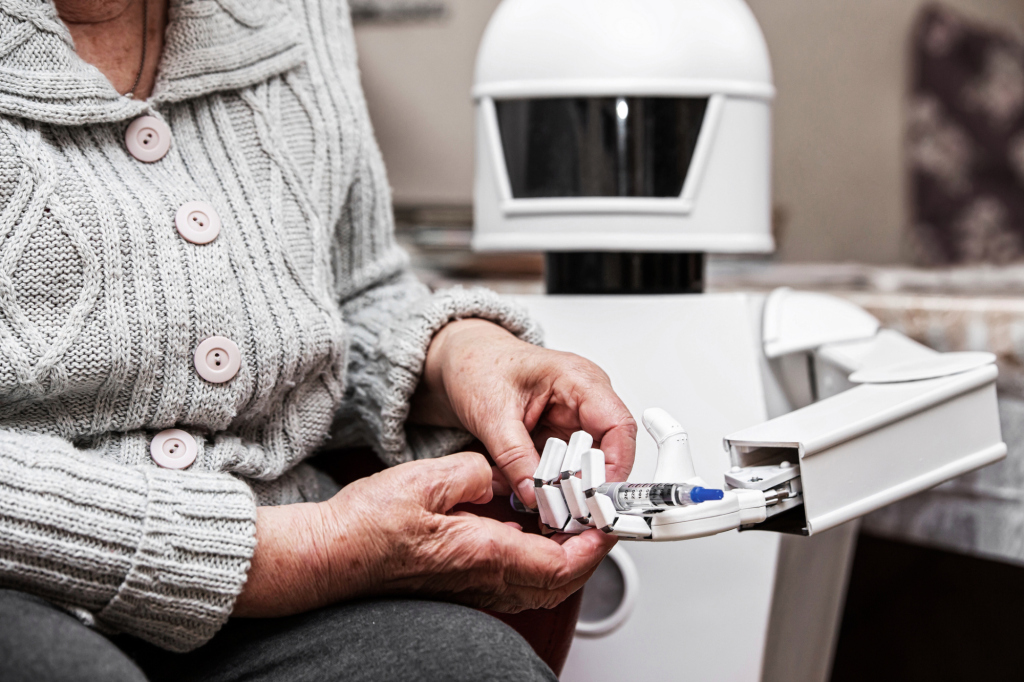This week’s column is in response to H.N.’s question from last week about robots caring for older people, indicating he did not want a robot to care for him.
Let’s take a look at six innovative robots that provide social support, connection and health services.
ElliQ: This robot for eldercare was developed by Intuition Robotics, an Israeli start-up with California offices. The object sits on a table and lights up when you call it. It has no face, arms or legs yet can imitate head motions and look up to show excitement. Referred to as “she,” this robot is considered a social partner that answers the phone, reads email and plays music. She also reminds the user to take medications and arranges for taxicabs. The older user can play games with her, access social media, conduct on-screen video chats and even suggest music, podcasts or audiobooks. It also can suggest activities if you’ve been sitting too long. For more info: https://elliq.com.
Care-O-Bot: This robot has a vaguely human shape with a round head, arms, hands, trays and a rolling base, providing health care, companionship and cognitive stimulation. It performs household tasks that include delivering food, drinks and medication as well as performing cooking and cleaning tasks. This robot can engage in conversations, place emergency calls and host video conversations. It can react to gestures such as tilting its head and other body gestures and was designed and implemented in Germany. For more info: www.care-o-bot.de/en/care-o-bot-4.html
Qoobo: Developed in Japan, Qoobo is a robotic pillow with a tail. When stroking it, the tail wags as if to say “hello”, giving older users the feeling of interacting with a live pet and giving them a sense of comfort. It was designed not only for older people but also for those with pet allergies as well as apartment dwellers not permitted to own pets. For more info: www.kickstarter.com/projects/1477302345/qoobo
Lovot: This pint-sized machine, also developed in Japan, is the size of a human baby and considered lifelike as it navigates the environment, recognizes people and asks for hugs. Its looks are considered a combination of a penguin, owl and huggable teddy bear. When you pick it up, the user feels warmth, and when rocked in your arms, Lovot will close its eyes and appear in a state of sleep. It received the best robot award at the 2019 Consumer Electronics Show and is considered notable because it isn’t designed to do anything. Its purpose is to “recognize you and bother you,” according to a Forbes article. For more info: https://lovot.life/en/.
Paro: This certified medical therapeutic robot looks like a baby harp seal and weighs about as much as a newborn baby. When petted, it opens its eyes and moves its flipper. It makes a sound similar to a baby seal and is active during the day and sleeps at night. Paro has a calming effect among its users and can recognize words such as its name, greetings and praise. When it responds to a stroke, it will remember its reaction and will respond the same way when stroked again. Developed in Japan, it has been used there and in Europe since 2003. Studies indicate Paro reduces patient and caregiver stress, improves relaxation and motivation and socialization with one another and caregivers. For more info: http://www.parorobots.comta
Tombot: This robot was launched in 2017 in Santa Clarita by Tom Stevens a former high-tech senior executive whose mother was diagnosed with Alzheimer’s disease and could no longer care for herself or her Goldendoodle dog. The robot is a realistic-looking puppy named Jennie that responds to touch based on sensors all over her body. Through voice activation software, she reacts to commands, speaks when asked to do so, responds to her name and makes puppy sounds based on recordings from 12-week- old puppies. In its early development, Jim Henson’s Creature Shop designed Jennie. For more info: https://tombot.com/
Robots and artificial intelligence provide an important service in compensating for eldercare shortages. H.N. we thank you for bringing to our attention the importance of technology in the aging space. Although only a few of us may want robot eldercare, the decision may depend on available options. Stay safe and well.
___________
Helen Dennis is a nationally recognized leader on issues of aging, employment and the new retirement with academic, corporate and nonprofit experience. Contact Helen with your questions and comments at [email protected]. Visit Helen at HelenMdennis.com and follow her on facebook.com/SuccessfulagingCommunity















